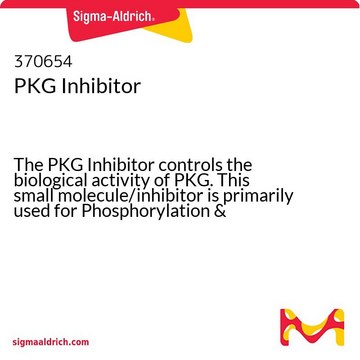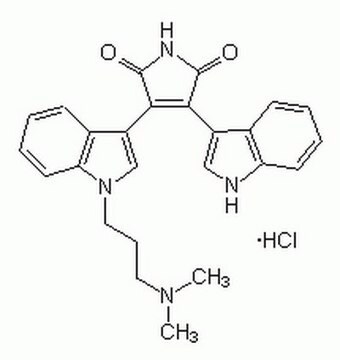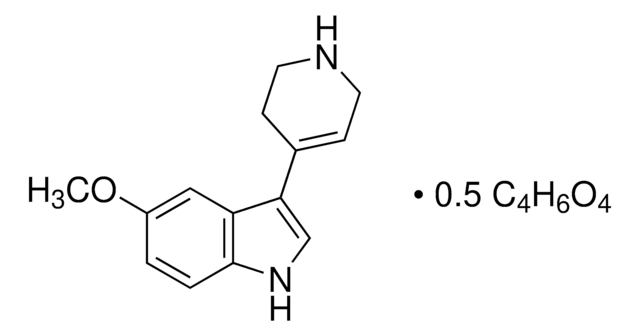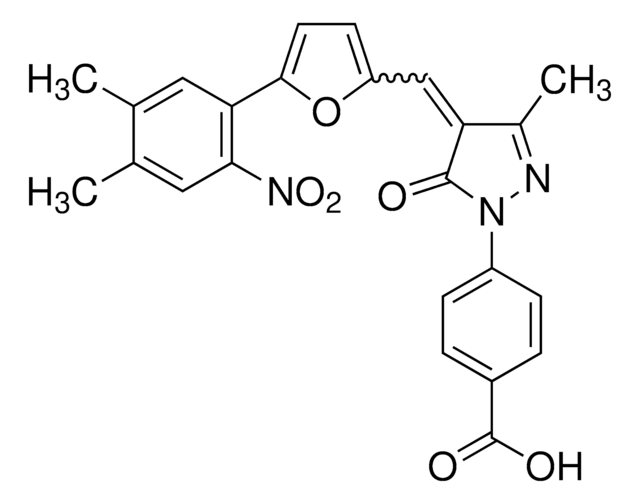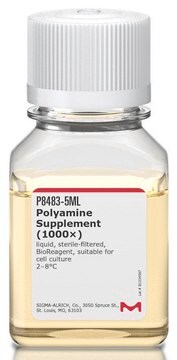O3139
Oxamflatin
≥98% (HPLC), solid
Sinónimos:
(2E)-5-[3-(Phenylsulfonylamino)phenyl]-pent-2-en-4-ynohydroxamic acid
About This Item
Productos recomendados
Nivel de calidad
Ensayo
≥98% (HPLC)
Formulario
solid
solubilidad
DMSO: soluble 13 mg/mL
temp. de almacenamiento
2-8°C
cadena SMILES
ONC(=O)\C=C\C#Cc1cccc(NS(=O)(=O)c2ccccc2)c1
InChI
1S/C17H14N2O4S/c20-17(18-21)12-5-4-7-14-8-6-9-15(13-14)19-24(22,23)16-10-2-1-3-11-16/h1-3,5-6,8-13,19,21H,(H,18,20)/b12-5+
Clave InChI
QRPSQQUYPMFERG-LFYBBSHMSA-N
Aplicación
- to study its effect on specificity protein 1 (Sp1) transcription and transactivation activity and CD1d mRNA expression in various tumor cells
- to study its inhibitory effect on long transcript- survival motor neuron gene 2 (SMN2) silencing mediated by DNA methylation
- to study its effect on somatic embryogenesis in Coffea arabica thorough a miniaturized and automated screening system
- to study its stand-alone effect on cytarabine-sensitive and resistant cells.
Acciones bioquímicas o fisiológicas
Características y beneficios
Producto relacionado
Código de clase de almacenamiento
11 - Combustible Solids
Clase de riesgo para el agua (WGK)
WGK 3
Punto de inflamabilidad (°F)
Not applicable
Punto de inflamabilidad (°C)
Not applicable
Equipo de protección personal
Eyeshields, Gloves, type N95 (US)
Elija entre una de las versiones más recientes:
Certificados de análisis (COA)
¿No ve la versión correcta?
Si necesita una versión concreta, puede buscar un certificado específico por el número de lote.
¿Ya tiene este producto?
Encuentre la documentación para los productos que ha comprado recientemente en la Biblioteca de documentos.
Artículos
Carcinogenesis and Epigenetics
Epigenetic modifications are thought to occur through two key interconnected processes—DNA methylation and the covalent modification of histones.
Nuestro equipo de científicos tiene experiencia en todas las áreas de investigación: Ciencias de la vida, Ciencia de los materiales, Síntesis química, Cromatografía, Analítica y muchas otras.
Póngase en contacto con el Servicio técnico